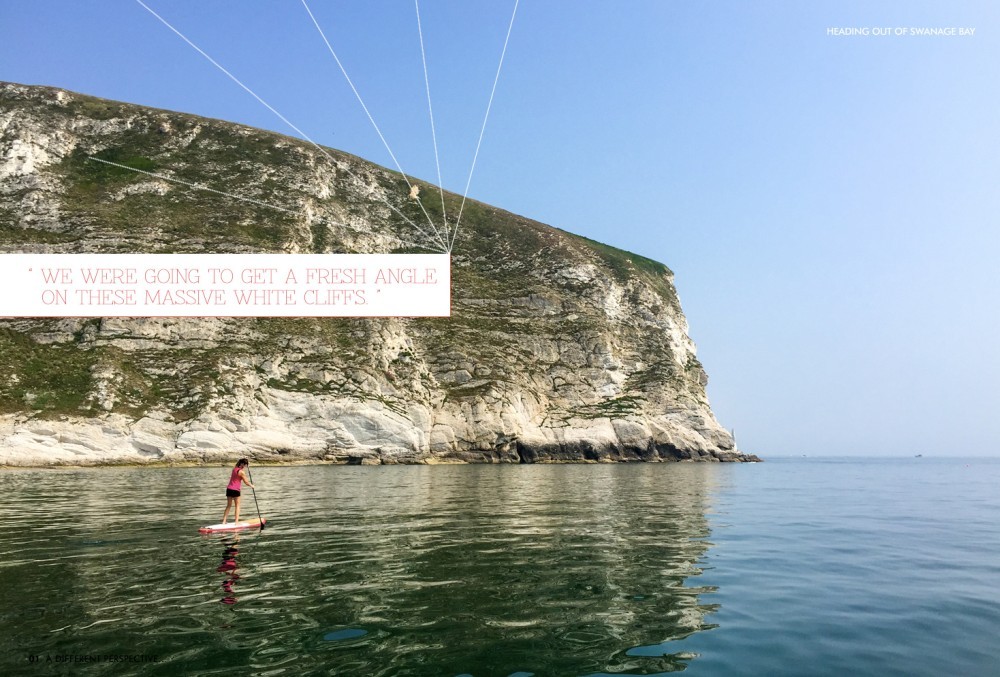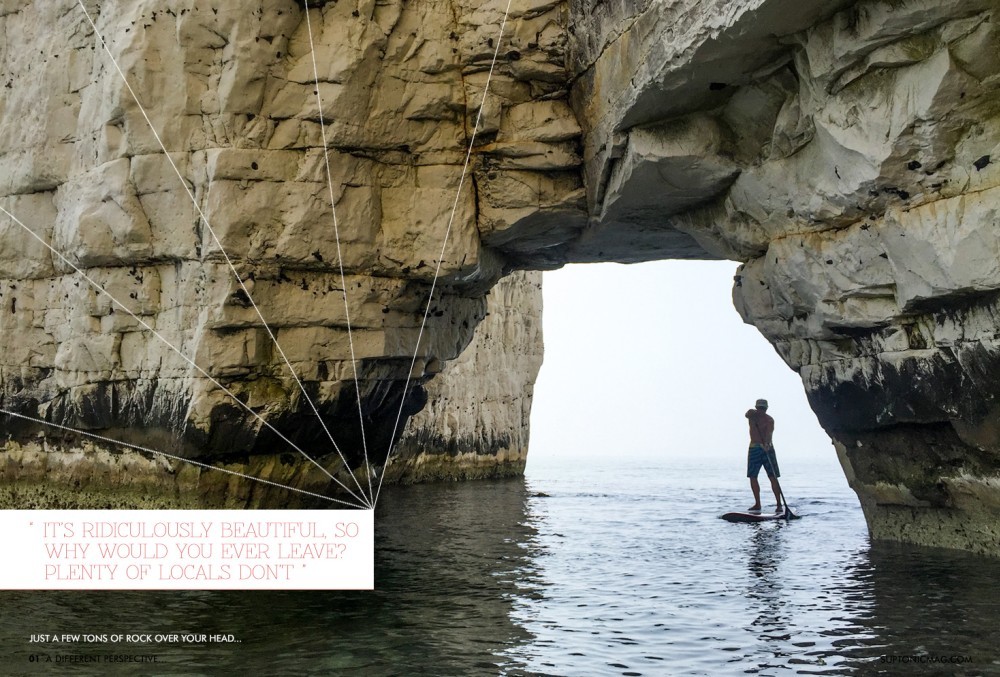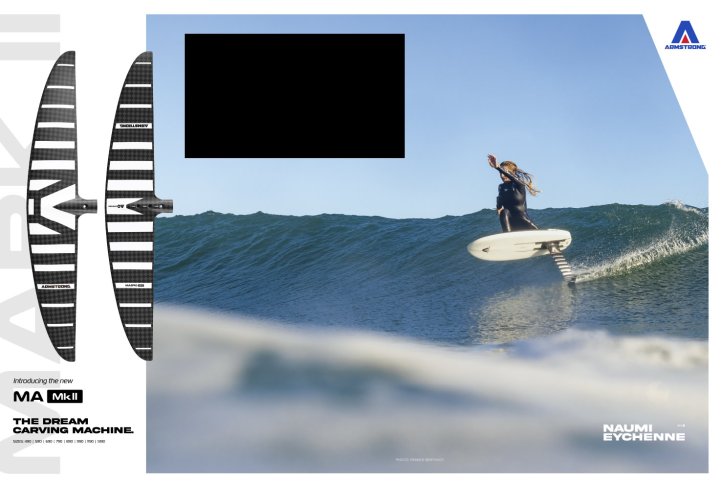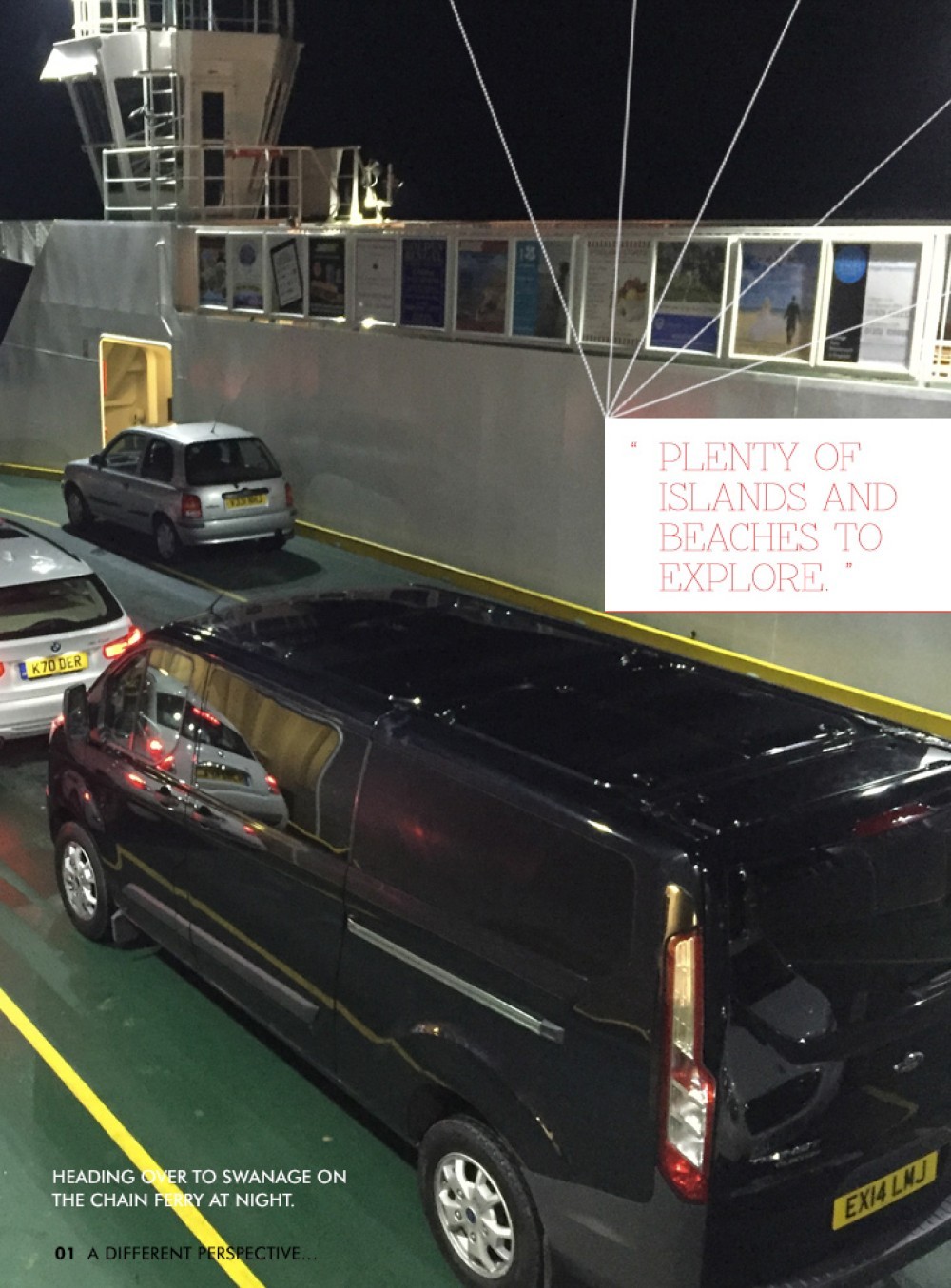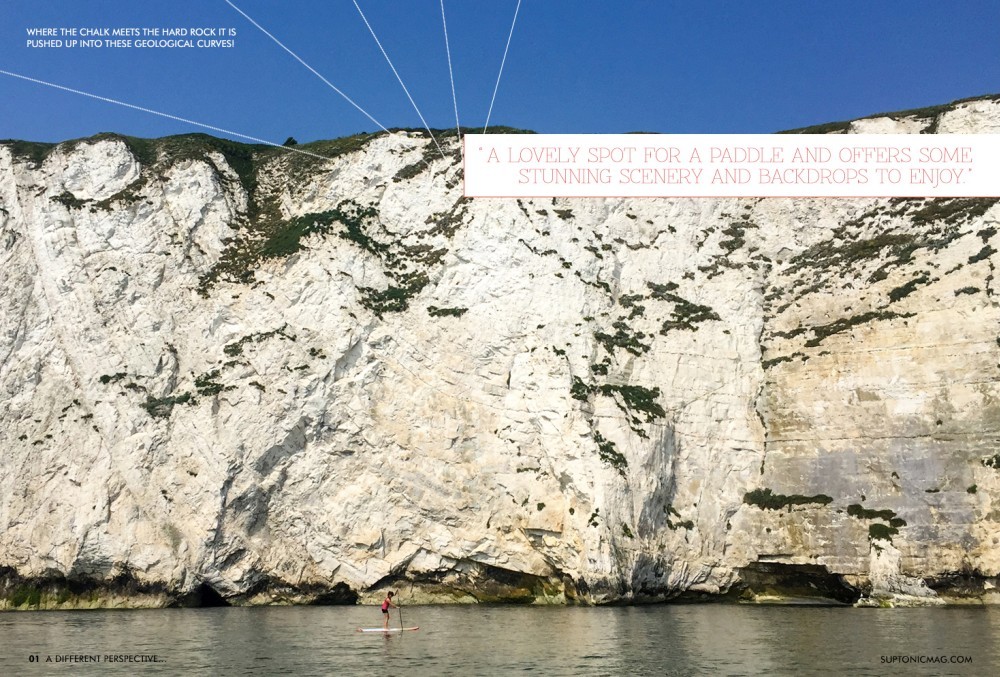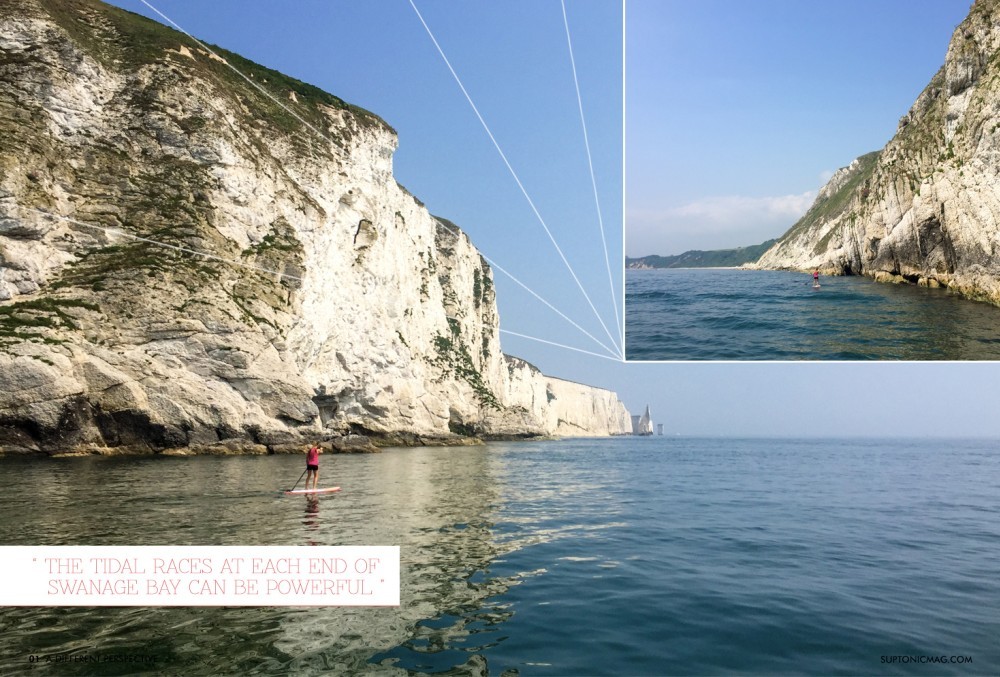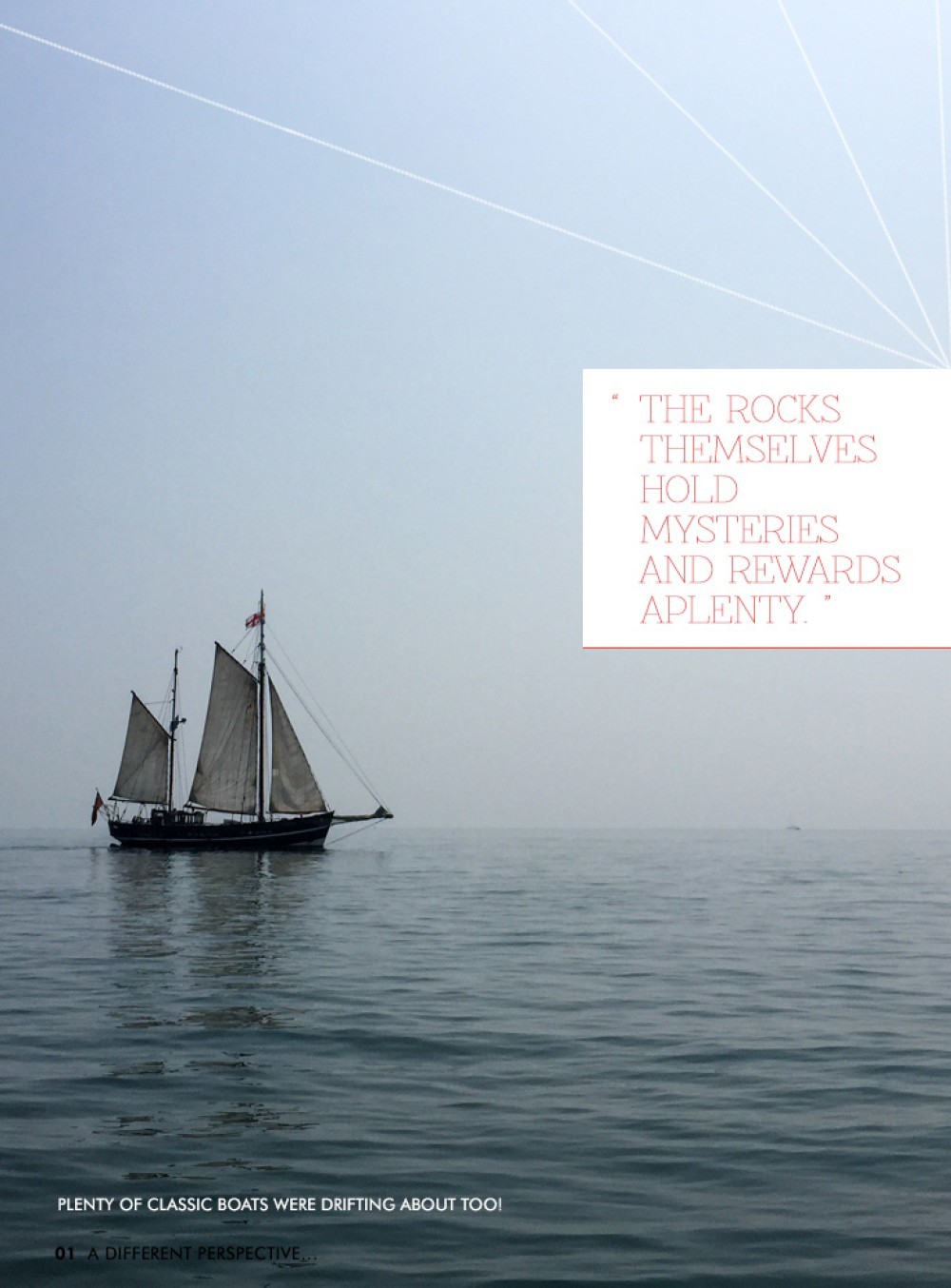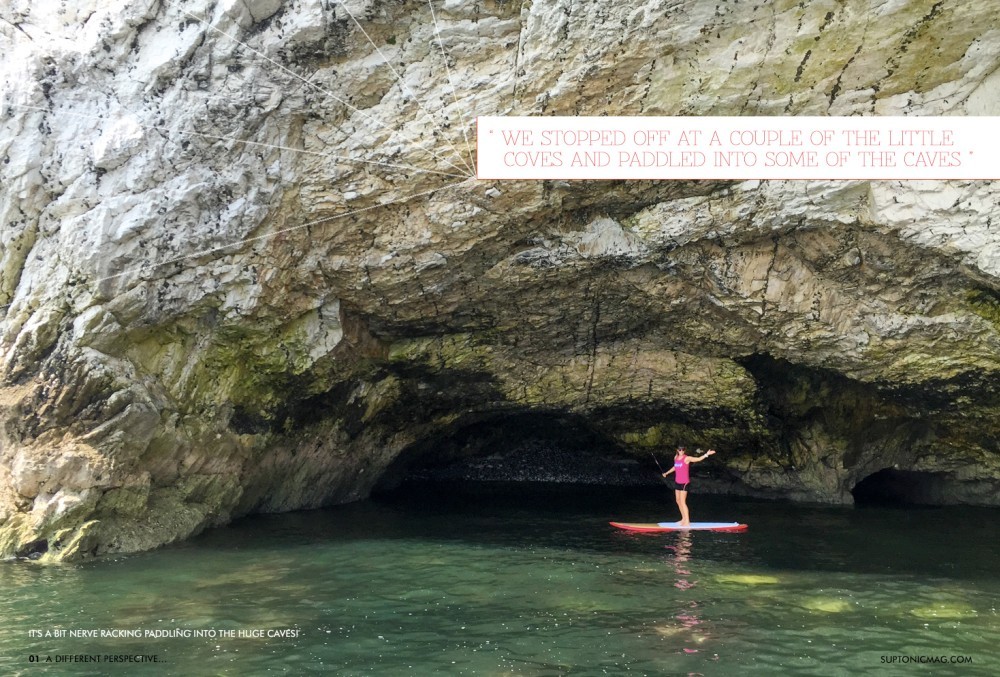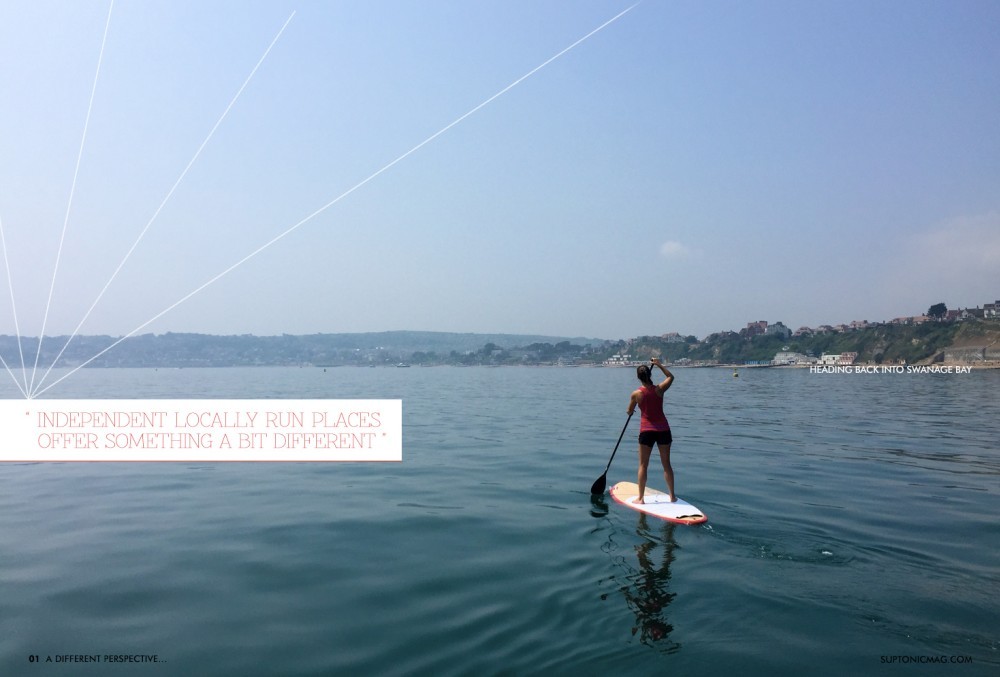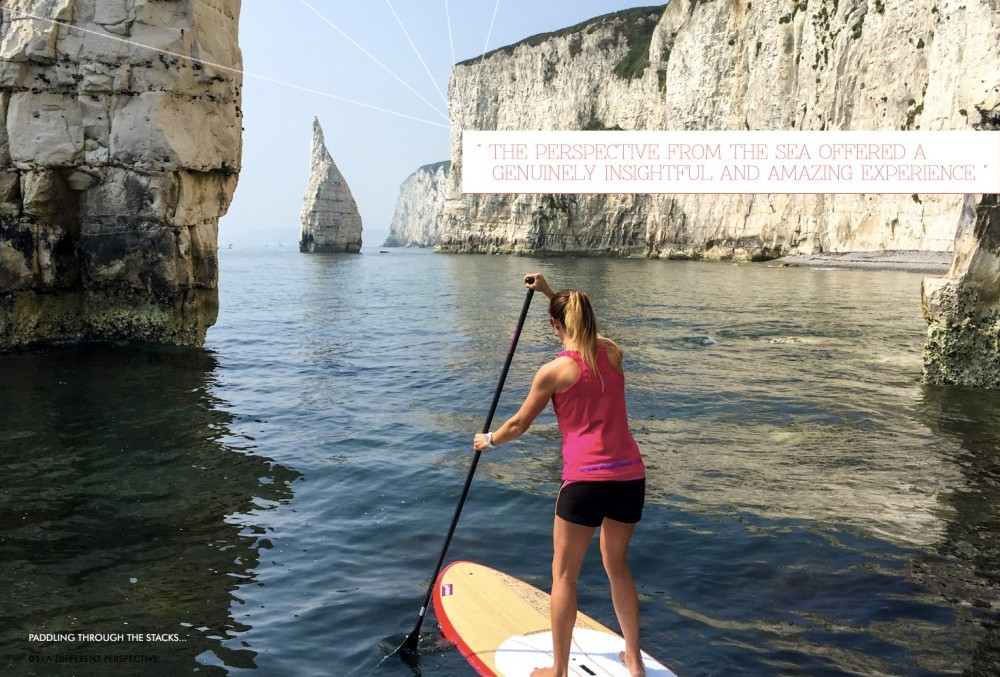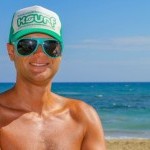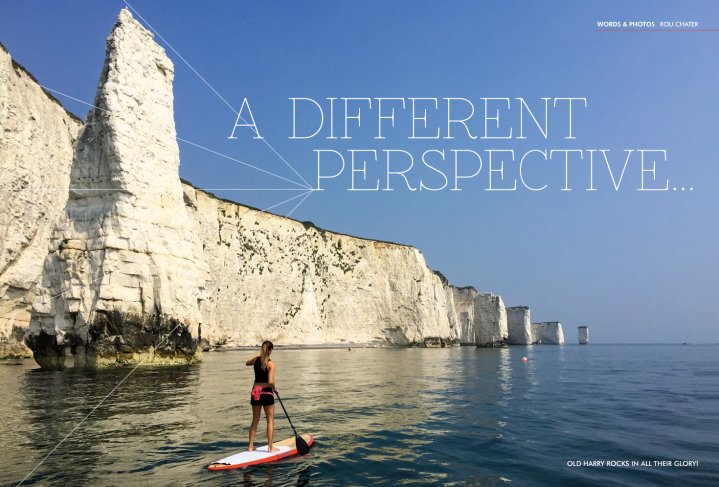
A Different Perspective
Issue 1 / Thu 28th Jul, 2016
Mary Booth has grown up on the Jurassic Coast, but it wasn’t until she started paddling she got to see it from an entirely new perspective. Together with Rou Chater, they luck out on a rare weather window that leads to adventure!
Rou Chater and Mary Booth luck out on a rare weather window on the South Coast that allows them to explore Old Harry Rocks and the Jurassic Coast as they have never experienced it before!
One of the things I love most about paddleboarding is that allows you to see the world from a unique perspective. I consider myself a waterman, proficient enough in many aquatic sports, but being out at sea on a boat or a kite is entirely different to being on a stand-up paddleboard. With the wind howling and things moving quickly you can’t take the time to reflect on your surroundings. Nor can you get close enough to the coastline to fully appreciate it.
On a recent trip to Swanage, Dorset, we were blessed with some of the calmest weather at sea I have seen in years. This afforded us the chance to explore an area of the coastline that we have never really got that close to before. Despite Mary having grown up in this part of the world, she had always experienced this stretch of coast from the perspective of the land, a ferry, sailing boat or her kiteboard. This time, we were going to get a fresh angle on these massive white cliffs.
Swanage is a strange place, accessible by quite a long and winding road through Wareham and the stunning village of Corfe with it’s iconic ruined castle; the Swash Channel cuts it off from the bustle of the nearby cities of Poole and Bournemouth. The neighbouring Poole Harbour is a large natural harbour popular with stand up paddleboarders and plenty of other water users. If you want to get to Swanage you either have to drive all the way around the harbour, a distance of over 20 miles or jump on the chain ferry at Sandbanks that takes you across the narrow harbour entrance. A scenic drive over Studland Heath and a winding country road will then lead you to this quaint English seaside town.
This relative inaccessibility adds to the eccentricity of the place; you can buy almost everything you need in Swanage; it’s ridiculously beautiful, so why would you ever leave? Plenty of locals don’t, and they spend their lives in this stunning part of the world. Travelling tourists come in droves during the summer months to enjoy the beaches, countryside, cliff top walks, and everything this seaside town has to offer - and that includes a steam railway and a nearby castle built by William the Conqueror in the 11th Century! It’s easy to see why the tourists keep returning and the locals often stay for the duration of their time on this earth, it has that kind of magical air about it.
Swanage itself sits at the eastern edge of the Jurassic Coast, an area of the English coastline featuring huge cliffs spanning the Mesozoic Era containing over 180 million years of geological history and thousands of fossils! To say it is an area steeped in history would be like saying the Beetles were a famous band. Walking along any of the beaches here with your eyes peeled you have the chance to discover ammonites and other small fossils, and if you are lucky you might come across something altogether more exciting, the world's first complete plesiosaur was found on this very stretch of coastline!
There are plenty of options for getting on the water around Swanage; Poole Harbour itself is a fantastic location with flat water that is sheltered from the sea and plenty of islands and beaches to explore. Just be aware that it is a very busy shipping harbour so stay clear of the markers and don’t go near the Swash Channel and the Chain Ferry, the tide can rip through there at over 5knots as there is such an enormous amount of water flowing into and out of the harbour.
A few miles out of town you will come across signs for Kimmeridge and then Durdle Door, two locations worth checking out on your board and just a short drive from Swanage itself. Kimmeridge, or K-Bay as it is commonly known, has been a haunt of local surfers, windsurfers and kiters for years and when the swell is working you can get some world-class waves here. There are three main surf spots to enjoy, so even if it is busy, you should be able to catch a wave or two.
The main break is The Ledges, to the left of the bay as you look out to sea, tucked under the impressive cliffs are a series of reefs. These offer rights and lefts depending on the state of the tide and, as long as you kick out before it gets too shallow, are quite accessible for all levels. If the swell is large, then K-Bay itself can serve up some decent waves and offers more shelter from the wind. Out on the far right of the bay is The Bench, the break here is fast and hollow and for experts only. You’ll also need to check the Ministry of Defence shooting range isn’t live, just to make sure you don’t get shot by accident!
Even if there is no swell, Kimmeridge is a lovely spot for a paddle and offers some stunning scenery and backdrops to enjoy. There is even a working nodding donkey pumping oil on the top of one of the cliffs. Currently, the well produces around 65 barrels of oil a day, which at current prices yields a tidy sum of over $3,000 a day and just over a million dollars per year! You have to pay to park in the car park at Kimmeridge, as it is private, and it can get busy during the summer holidays with people enjoying picnics and swimming in the sea, so as ever respect the other water users and be as courteous as you always should be when paddling.
Heading back towards the jewel in the crown of this piece, let’s return to Swanage and the subject of this mission: the cliffs around Old Harry Rocks. As you look out from the west side of Swanage Bay on a clear day, you will see the Isle of Wight in the distance. The iconic Needles rock formation, which features in many a yachting photograph, stretch out from the IOW towards the eastern end of Swanage Bay and Old Harry Rocks.
The rocks and cliffs here are composed of chalk. The area of Ballard Down, behind the rocks, was formed around 66 million years ago, and this chalk rock formation stretched all the way to the Isle of Wight, a distance of some 20 miles. Around 5000 years BC the formation of chalk was believed to have been breached by the River Solent. This created the Isle of Wight as we know it and the subsequent erosion tore down much of the stretch of chalk leaving just the Needles and Old Harry Rocks behind.
Due to the nature of the erosion, it is difficult for boats and vessels to get close to the rocks. The only way to explore is either from walking on the top of Ballard Down and looking over the edge of the cliff, or by a small boat, or you’ve guessed it a SUP board! The tidal races at each end of Swanage Bay can be powerful, so be sure to plan any trip out here accordingly. The weather can change notoriously quickly too, with fog and rain often rolling in from the channel. It goes without saying that any adventure here should heed the tide and tidal flows and also ensure a clear weather window will allow you to get there and back safely.
The surrounding cliffs are sheer on either side of the rocks, so your only get-out points are Studland Bay or Swanage Bay, both of which are some distance from Old Harry. The rewards for those of you with the foresight to make a plan, and also get lucky with the weather though are huge. It has to be one of the most awe-inspiring paddles I have enjoyed. Nature is raw and untouched here; the scenery is stunning, and the rocks themselves hold mysteries and rewards aplenty.
The years haven’t been kind to Old Harry, they’ve taken his wife, numerous times in fact, and his current squeeze is just a deteriorating stump of chalk! The constant crashing of the waves has created caves, that turned to arches, then when the arches collapse they leave the stacks and eventually they too disappear into the sea. It’s fair to say in a few thousand years Old Harry himself won’t be around anymore, although a replacement will no doubt appear from the midst of Ballard Down eventually!
Right now, with proper planning and a bit of luck you can enjoy the majesty and incredible wildlife that blesses this section of the coastline. There are huge caves to explore, arches to paddle through and stacks to check out. Hidden beaches accessible only to the intrepid few await you, and if you are lucky enough to get the weather just right, the clear blue sea will give you a glimpse at the remnants of what is left of that 20 mile stretch of chalk that reaches out to the Isle of Wight in the distance.
You can access Old Harry Rocks from either side; the Studland Bay launch offers a shorter route, but you miss out on a lot of the majesty of the cliffs on the way out of Swanage Bay. We launched at Swanage Bay and paddled round on a relatively slack high tide to make it easier on the arms. It’s just less than six miles from Swanage as a round trip, and we stopped off at a couple of the little coves and paddled into some of the caves along the way.
If you make a weekend of it then paddling in Swanage Bay gives a fantastic viewpoint of this stunning seaside town and you can also head out west towards Peveril Point and Durlston Bay. The tidal race around Peveril Point can be vicious so watch out for that, after Durlston Bay it gets quite rough on most days due to the open ocean that part of the coastline faces. Swanage is lucky enough to face east so the prevailing weather from the south west means the bay is usually sheltered.
There are plenty of accommodation options in the area, everything from campsites and static caravans through to hotels and B&B’s, with a number of privately owned apartments and holidays homes also being added to the mix. A quick search online, or a call to the friendly staff at the Swanage Tourist Information Centre will usually have you a bed sorted fairly swiftly. There are also great places to stay outside of Swanage, such as Kingston and Worth, which offer easy access to Kimmeridge, and nearby Corfe Castle, which I mentioned earlier and is well worth a visit. These iconic ruins are the throwback to William the Conquerer who built them in the 11th century. Corfe Village itself is straight out of a postcard, a favourite spot to head to for lunch if the action on the water isn't looking too good.
In Swanage, you'll find a broad range of restaurants and eateries offering great food all day. A few chain outlets have popped up in recent years, but the independent locally run places offer something a bit different, great quality and service and come highly recommended. During the daytime there are a number of cafes and bakeries and you’ll find yourself being torn between salads and savouries or indulgent cream teas and cakes! Twist near the train and bus station, and Love Cake in the High Street are certainly worthy of a visit. When the sun sets a traditional fish and chip takeaway eaten on the stone jetty is a great way to recharge at the end of the day. However, if you fancy something a bit smarter there are plenty of options all within a stone’s throw of each other; Chilled Red and Canteen are favourites of ours and Tawny’s is also worth checking out. After you've eaten, you'll find a plethora of great pubs serving a vast array of beers and ales to enjoy, and there’s even a dedicated cocktail bar if something shaken or stirred is more your style. There is even "The Club" which is open till the early hours to keep you truly entertained if that's your bag, and for afters there is a ‘traditional English kebab’ shop to soak up the beer!
Swanage is a beautiful town, almost stuck in a time warp due to its location, cut off from the hustle and bustle of Poole and Bournemouth, surrounded by sea and countryside it offers an experience few will ever forget. With a bit of planning and a touch of luck with the weather, you could be exploring these stunning cliffs for yourself. Listening to the sound of the birds, the gentle lapping of the waves and taking in the awe-inspiring cliffs as you paddle along the crystal clear waters…
Despite having spent most of her life here, Mary had never enjoyed this part of the coastline as we did over those two fantastic days in June. The perspective from the sea offered a genuinely insightful and amazing experience that will stay with us forever.
If you’ve not paddled here yet, put it on your bucket list now, you won’t be disappointed!
By Rou Chater
Rou Chater has been kitesurfing for over twenty years, paddleboarding for the last six years, and was there testing the first wingsurfer from Naish in Tarifa when it arrived on the continent. He is passionate about riding waves and exploring new places. As the publishing editor, he oversees everything at Tonic but also our sister magazines IKSURFMAG and IMB. He's been on the water since he was born and has never looked back, in the winter you'll find him chasing swells in the Caribbean and during the summer he can be found all over Europe at various SUP, Kitesurf and Mountain Bike events getting features for the magazines.




